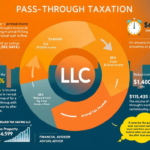Collecting rent on time is the most crucial aspect of your business. Without tracking on-time collection, knowing who owes rent, how much rent is due, when it’s due, and what, if any, payments are late, you risk losing money which endangers your business.
There’s also the time-suck of collecting rent, right? Are you tired of the time it takes to drive and collect rent from tenants? Are you tired of worrying about who owes what? Wouldn’t it be great to have a streamlined process that makes collecting rent more efficient for both you and your tenants?
Keep reading to learn more about what a rent roll is, why you need one, and how to create one.
What Is a Rent Roll?
A rent roll is a “register of rents including the names of tenants and the amounts due.” (Merriam-Webster).
A rent roll addresses two purposes:
- It gives landlords a snapshot of their tenants and income to the property.
- It is used in real estate transactions to help investors and banks as part of their due diligence.
For some time, people have underestimated the value of a rent roll. As a result, they have been willing to settle for the fickleness and inconsistencies of their revenue collection. They have been ready to live with the anxiety, headaches, and hardships that come with not knowing the truth about their property. Sound familiar?
However, as time has gone on, more and more property principals recognize the importance and value of a rent roll. Having one helps generate guaranteed income with grounded tracking to help them have a valuable asset when banks, lenders, and investors look.
If you aren’t using a rent roll, this is an excellent time to start.
How Is a Rent Roll Different From a Lease Ledger?
A lease ledger, also known as a rental ledger, which you may be familiar with, gives the big picture about a property’s finances, and a rent roll provides more detailed information on each rental unit.
- A lease ledger is a financial tool that tracks property expenses such as revenue, taxes, mortgage payments, and other miscellaneous costs.
- A rent roll gives a detailed snapshot of a property’s financials using unit-specific information.
How Is a Rent Roll Used?
A rent roll provides an itemized report of each unit for an income-producing property. It enables rental property owners, managers, investors, and lenders to track crucial information. Information such as tenant name, unit occupation, the tenant’s payment history, security deposit, lease start, end date, any outstanding/late payments, and more, depending on the information you want.
In addition, a rent roll can show:
- Tenant renewals and turnovers
- Rent growth
- On-time rent collection
- Late fee revenue
- Evictions
- Market research
A rent roll tells the story of any type of rental asset, including single-family houses, multi-family units, retail, office, or commercial property; it doesn’t matter. It is used by:
- Buyers and sellers during the due diligence period
- Property manager and landlords
- Real estate investors analyzing potential deals
- Mortgage brokers and lenders
It allows an analysis of what is happening. Hence, all the parties above stay grounded in what is true and can make proper decisions about your property and tenants rather than using guesswork because of wrong information.
Why Is a Rent Roll Essential for You?
There are two reasons that you want to have a well-thought-out rent roll.
- You will make better decisions about your property, i.e., unit number and lease details, tenant activity, profit and loss based on unit, annual outlook.
For example, if you wanted to drive from Arkansas to Mexico, you wouldn’t want to do so without a map, would you? If you have no map to get you where you want to go, you will make wrong turns, end up in places where you don’t want to be, take longer to get to your destination, or never get to your destination. A rent roll is a map of your property that allows you to make good choices in real-time.
- Showing profitability on a rent roll shows a well-managed property with retention of tenants as a priority.
When a real estate entity is valued, regardless of sales, the rent roll value is between 80-90% of the entire business value. The total value of a real estate agency includes the condition of the rent roll, location, average rent, annual management fee, vacancy rates, and other income generated.
How To Create a Rent Roll
You can create a rent roll by using a spreadsheet such as Microsoft Excel.
Label the rows and columns with headings and input the data as you collect.
Headers can include:
- Unit number
- Square footage
- The number of beds and baths (helps determine if you’re collecting fair market rent) security deposit collected
- Rent amount collected and owed
- Lease start and end date
- Additional tenant expenses and unit information.
Final Thoughts:
A rent roll is a report that provides detailed information about a property, its tenants, and rents. This tool allows for maximizing rental income and improved property performance. It is a critical component of a well-managed property. In addition, it can make a real difference in how a property is valued.
With our free template download or a spreadsheet of your own, you can take control of the daily, monthly, and annual outcomes of the property you invest in, own, or manage.
If you haven’t already, start one today and become more vigilant and, in return, produce a better outcome for your rental properties.










